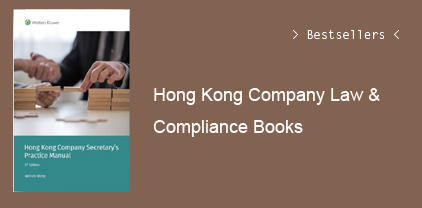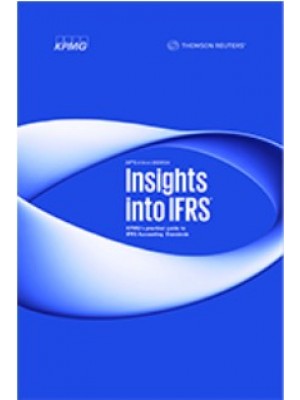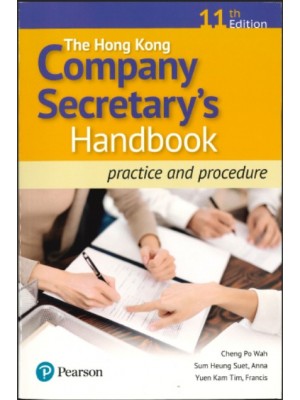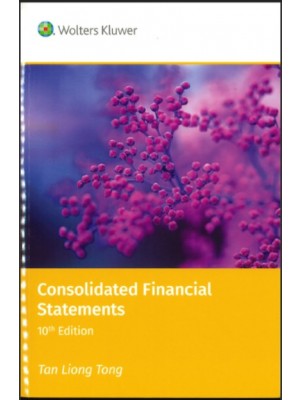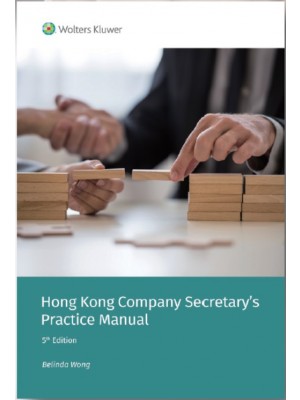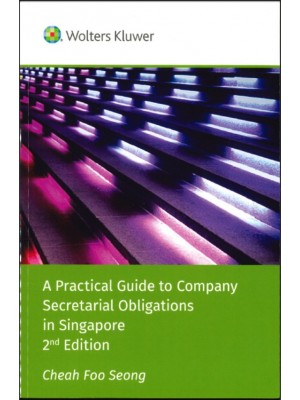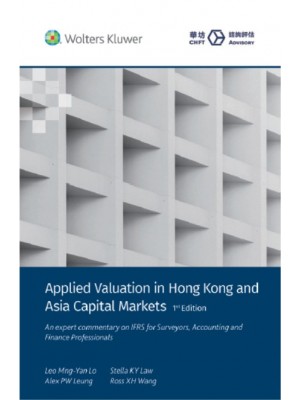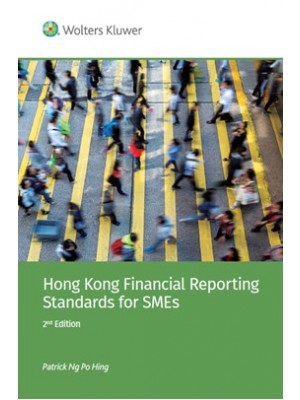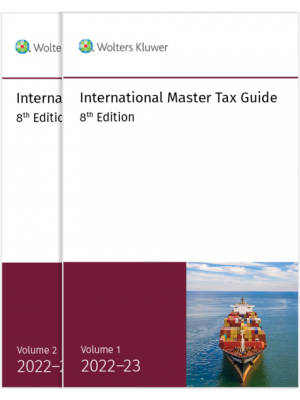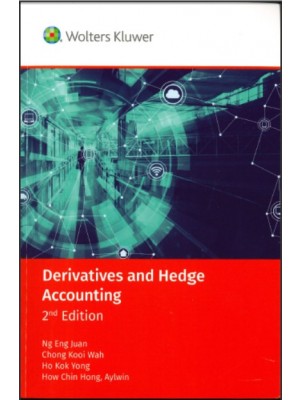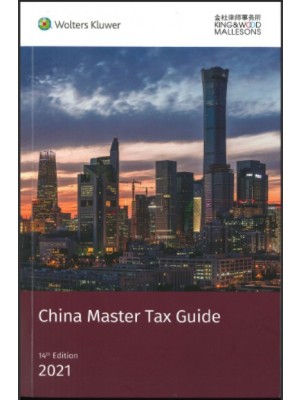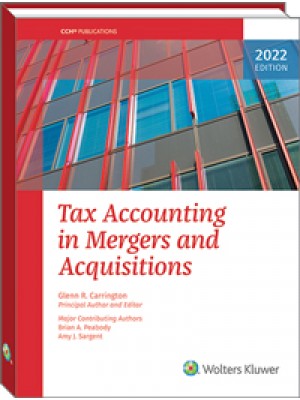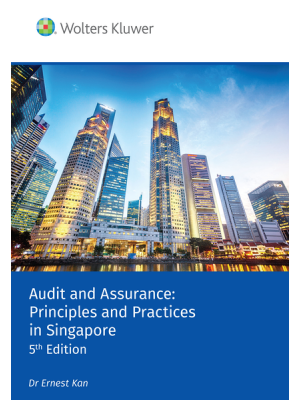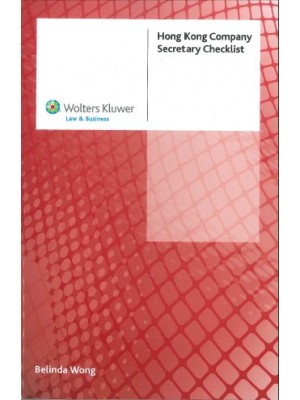Preface xvii
PART I INTRODUCTION
1 Credit Basics 3
1.1 Meaning of Credit 4
1.2 Role of Credit 6
1.3 Credit Market 6
1.4 Credit – Advantages and Disadvantages 7
1.4.1 Merits of Credit 7
1.4.2 Demerits of Credit Usage 9
1.4.3 Is Wealth Creation Through Use of Credit Easy and Simple? 10
1.5 Suppliers of Credit 11
1.6 Credit Risk Study 12
Appendix: Credit Creation 13
Questions/Exercises 14
2 Essentials of Credit Risk Analysis 15
2.1 Meaning of Credit Risk 15
2.2 Causes of Credit Risk 16
2.3 Credit Risk and Return 17
2.4 Credit Risk Analysis 17
2.5 Historical Progress of Credit Risk Analysis 19
2.6 Need for Credit Risk Analysis 19
2.7 Challenges of Credit Risk Analysis 22
2.7.1 The Art and Science of Credit Risk Analysis 22
2.8 Elements of Credit Risk Analysis 24
Questions/Exercises 25
3 Credit Risk Management 27
3.1 Strategic Position of Credit Risk Management 27
3.2 Credit Risk Management Context 28
3.3 Credit Risk Management Objectives 28
3.4 Credit Risk Management Structure 29
3.5 Credit Risk Culture 29
3.6 Credit Risk Appetite 30
3.7 Credit Risk Management in Non-Financial Firms 31
3.8 Credit Risk Management in Financial Intermediaries 31
3.8.1 Stages of Credit Risk Management in Financial Intermediaries 31
3.8.2 Credit Risk Management Process 33
Questions/Exercises 34
PART II FIRM (OR) OBLIGOR CREDIT RISK
4 Fundamental Firm/Obligor-Level Risks 37
4.1 Firm (or) Obligor Risk Classification 37
4.1.1 Business Risks or Operating Risks (OR) 37
4.1.2 Financial Risks (FR) 38
4.2 Risk Matrix 39
4.3 Different Risk Levels 39
4.3.1 Low Operating Risk and Low Financial Risk 39
4.3.2 Low Operating Risk and Medium Financial Risk 39
4.3.3 Low Operating Risk and High Financial Risk 40
4.3.4 Medium Operating Risk and Low Financial Risk 40
4.3.5 Medium Operating Risk and Medium Financial Risk 40
4.3.6 Medium Operating Risk and High Financial Risk 40
4.3.7 High Operating Risk and Low Financial Risk 40
4.3.8 High Operating Risk and Medium Financial Risk 41
4.3.9 High Operating Risk and High Financial Risk 41
Questions/Exercises 42
5 External Risks 43
5.1 Business Cycle 43
5.1.1 Benefits of Study of Business Cycles 45
5.1.2 Credit Risk in the Business Cycle 46
5.2 Economic Conditions 46
5.2.1 Private Consumption 47
5.2.2 Government Spending 47
5.2.3 Investment 48
5.2.4 Imports and Exports 48
5.2.5 How to Link NI Components to the Firm 48
5.2.6 Benefits of Study of National Income 49
5.3 Inflation and Deflation 50
5.4 Balance of Payments and Exchange Rates 51
5.5 Political 52
5.6 Fiscal Policy 53
5.7 Monetary Policy 53
5.8 Demographic Factors 54
5.9 Regulatory Framework 55
5.10 Technology 55
5.11 Environment Issues 55
5.12 International Developments 56
5.13 Others 56
5.14 Monitoring External Risks 57
Questions/Exercises 58
6 Industry Risks 61
6.1 Understanding Obligor’s Industry or Market 61
6.1.1 Sector vs. Industry vs. Market Segment 61
6.1.2 Challenges of Industry Classification 62
6.2 Types of Industry Risks 63
6.3 Industry Life Cycle 64
6.4 Permanence of Industry 65
6.5 Government Support 65
6.6 Industry and Factors of Production 66
6.7 Industry and Business Cycles 66
6.8 Industry Profitability 67
6.8.1 Competition Among the Existing Firms Within the Industry 68
6.8.2 Threat of New Entrants 68
6.8.3 Threat of Substitute Products 69
6.8.4 Bargaining Power of Buyers 69
6.8.5 Bargaining Power of Suppliers 70
6.9 Competitor/Peer Group Analysis 71
Questions/Exercises 77
7 Entity-Level Risks 79
7.1 Understanding the Activity 80
7.2 Risk Context and Management 81
7.3 Internal Risk Identification Steps 82
7.3.1 Interviews and Questioning 82
7.3.2 Market Developments and Peer Comparison 83
7.4 SWOT Analysis 83
7.5 Business Strategy Analysis 84
7.5.1 Cost Leadership 85
7.5.2 Differentiation 86
7.5.3 Contraction 86
7.5.4 Market Penetration 86
7.5.5 New Markets 87
7.5.6 New Products/Product Synergy Diversification 87
7.5.7 Product/Market Diversification 87
7.5.8 Consolidation 87
7.5.9 Merger/Takeover 87
7.5.10 Expansion 88
7.5.11 Cost Control 88
7.5.12 Focus 88
7.6 Pitfalls in Strategy 89
7.7 Management Analysis 90
7.7.1 One-Man Rule 91
7.7.2 Joint Chairman/CEO/MGD Position 91
7.7.3 Imbalance in Top Management Team 91
7.7.4 Weak Finance Function 92
7.7.5 Lack of Skilled Managers (or Inability to Attract Skilled Managers in Key Positions) 92
7.7.6 Disharmony in Management 92
7.7.7 Change in Ownership 92
7.7.8 Cultural Rigidity 92
7.7.9 Lack of Internal Controls 93
7.7.10 Low Staff Morale 93
7.7.11 Fraudulent Management 93
7.7.12 Myopic Vision 93
7.7.13 Big Projects 93
7.7.14 Inadequate Response to Change 94
7.7.15 Poor Corporate Governance 94
7.8 Other Internal Risks 94
Questions/Exercises 97
8 Financial Risks 99
8.1 Importance of Financial Statements 99
8.2 Quality and Quantity of Financial Statements 101
8.2.1 Quality of Financial Statements 101
8.2.2 Quantity of Financial Statements 102
8.3 Role of Historical Financial Statements 102
8.4 Financial Analysis 103
8.4.1 Balance Sheet 103
8.4.2 Income Statement (or) Profit and Loss Account 104
8.4.3 Cash Flow Statement (CFS) 105
8.5 Analytical Tools 105
8.5.1 Accounting Analysis 105
8.5.2 Common Sizing Analysis (CSA) 107
8.5.3 Indexed Trend Analysis (ITA) 110
8.5.4 Ratio Analysis 113
8.6 Solvency Ratios 115
8.6.1 Liquidity Ratios 115
8.6.2 Long Term Solvency Ratios 117
8.6.3 External Finance Ratios 120
8.6.4 Dividend and Equity Ratios 120
8.6.5 Cash Flow Ratios 121
8.7 Operational Ratios 123
8.7.1 Performance Ratios 123
8.7.2 Profitability Ratios 124
8.7.3 Return on Investment (ROI) Ratios 125
8.7.4 Asset Management (or Activity) Ratios 126
8.7.5 Leverage (Operating and Financial) Ratios 128
8.7.6 Cost-Volume-Profit (CVP) Ratios 133
8.8 Encapsulated Ratios 134
8.8.1 Dupont Model 134
8.8.2 Predictive Power of Ratios 135
Questions/Exercises 143
9 Integrated View of Firm-Level Risks 147
9.1 Relevance of an Integrated View 147
9.2 Judgement 147
9.3 Identifying Significant Credit Risks 148
9.4 Risk Mitigants 150
9.5 Types of Mitigants 150
9.5.1 Qualitative Mitigants 150
9.5.2 Quantitative Mitigants 152
9.5.3 Difference between Qualitative and Quantitative Mitigants 153
9.6 Principles to be Borne in Mind While Selecting Mitigants 153
9.7 Monitoring of Credit Risk 154
Appendix: Credit Risks and Possible Mitigants 155
Questions/Exercises 158
10 Credit Rating and Probability of Default 161
10.1 Credit Risk Grading 161
10.1.1 Linking EIIF Evaluation to Credit Risk Grades 161
10.1.2 Benefits of Credit Risk Grade System 163
10.2 Probability of Default 163
10.2.1 Benefits of PD Values 165
10.2.2 PD Values and Credit Decisions 165
10.3 External vs. Internal Rating 166
10.3.1 Reliability of External Ratings 167
10.3.2 Internal Ratings 168
10.4 PD in Credit Structural Models 169
10.4.1 The Merton Model (1974) 169
Questions/Exercises 172
PART III CREDIT RISKS – PROJECT AND WORKING CAPITAL
11 Credit Risks in Project Finance 177
11.1 Distinctive Features of Project Finance 177
11.2 Types of Project Finance 178
11.3 Reasons for Project Finance 179
11.3.1 Scarce Resources 179
11.3.2 Risk Sharing 179
11.3.3 Off-Balance Sheet Debt 179
11.3.4 Avoidance of Restrictive Covenants 179
11.3.5 Tax Considerations 180
11.3.6 Extended Tenor 180
11.4 Parties Involved in Project Finance 180
11.4.1 Sponsors 180
11.4.2 Project Lenders 180
11.4.3 Project Contractors/Consultants/Lawyers/Accountants 181
11.4.4 Governments 181
11.4.5 Multilateral Agencies 181
11.5 Phases of Project and Risks 182
11.5.1 Construction Phase Risks 182
11.5.2 Start-Up Phase Risks 182
11.5.3 Operational Phase Risks 183
11.6 Project Credit Risks 183
11.6.1 EIIF Risks 183
11.6.2 Project Specific Risks 184
11.6.3 Project Financial Viability Risks 186
11.7 Financial Study 187
11.7.1 Cash Flow Forecasts 187
11.7.2 Estimation of the Economic Worth of the Project 189
11.7.3 Assessing Creditworthiness – Building a Lender’s Case 190
11.8 Project Credit Risk Mitigants 192
Questions/Exercises 202
12 Credit Risks inWorking Capital 207
12.1 Definition of Working Capital 207
12.1.1 Working Capital Cycle – Finance Manager’s Key Concern 207
12.1.2 Working Capital Cycle – Lending Bank’s Point of View 208
12.2 Assessing Working Capital through the Balance Sheet 208
12.3 Working Capital Ratios 210
12.4 Working Capital Cycle 212
12.5 Working Capital vs. Fixed Capital 216
12.6 Working Capital Behaviour 216
12.6.1 Availability of Finance 217
12.6.2 Changes in Trade Terms 218
12.6.3 Changes in Business Volume 219
12.6.4 Price Changes 222
12.6.5 Others 222
12.7 Working Capital, Profitability and Cash Flows 223
12.8 Working Capital Risks 225
12.8.1 Over-trading 225
12.8.2 Diversion Risk 227
12.8.3 Inadequate Financial Management 228
12.8.4 Inflation Risk 228
12.8.5 Inadequate Provisioning of Working Capital in Original Project Costs 228
12.8.6 Losses and Reducing Profitability 228
12.8.7 Inadequate Structuring of Facilities by Banks 229
12.8.8 Unforeseen Contingencies 229
12.9 Impact of Working Capital Risks 229
12.10 Working Capital Risk Mitigants 230
12.10.1 Covenants 230
12.10.2 Cancellation/Tightening/Temporary Freeze of Facilities 230
12.10.3 Increase Pricing 231
12.10.4 Liquidation of Non-Core Assets 231
12.10.5 Owners’ Injection/Strengthening Net Working Capital 231
12.10.6 Improvement of Working Capital Management 231
12.10.7 Insure against the Risk from Unforeseen Contingencies 231
12.11 Working Capital Financing 232
Questions/Exercises 236
PART IV CREDIT PORTFOLIO RISKS
13 Credit Portfolio Fundamentals 241
13.1 Credit Portfolio vs. Equity Portfolio 241
13.2 Criticality of Portfolio Credit Risks 242
13.3 Benefits of Credit Portfolio Study 242
13.3.1 Active Credit Portfolio Management 242
13.3.2 Overall Credit Risk Reduction 243
13.3.3 Optimizes Liquidity 244
13.3.4 Assists Sales and Marketing 244
13.3.5 Insights into Sectoral Risk Exposures 244
13.3.6 Solves the Capital Dilemma 245
13.3.7 Portfolio Management Strategies 246
13.3.8 Credit Quality Issues 247
13.4 Portfolio Analysis 247
13.5 Credit Portfolio Risk vs. Return 249
Appendix: Organizational Conflict in Credit Risk Management 249
Questions/Exercises 251
14 Major Portfolio Risks 253
14.1 Systematic Risk 253
14.1.1 Triggers of Systematic Risk 254
14.1.2 Consequences of Systematic Risk 254
14.2 Diversifiable Risk 255
14.3 Concentration 258
14.3.1 Industry or Sector Concentration 258
14.3.2 Exposure or Name Concentration 259
14.3.3 Region/Location/Country Concentration 259
14.3.4 Foreign Currency Concentration 259
14.3.5 Collateral Risk 260
14.3.6 Maturity Risks 260
14.3.7 Funding Risk 261
14.3.8 Correlation Risks 262
14.4 Credit Portfolio Beta 263
Questions/Exercises 263
15 Firm Risks to Portfolio Risks and Capital Adequacy 265
15.1 Obligor PD and Portfolio PD 265
15.2 Migration Risk 266
15.2.1 Firm Credit Risk Migration 266
15.2.2 Portfolio Risk Migration 268
15.2.3 Benefits of Migration Risk Study 269
15.3 Default Risk 269
15.3.1 Firm-Level Defaults 269
15.3.2 Portfolio-Level Defaults 270
15.4 Loss Given Default (LGD) 270
15.5 Expected Loss (EL) 271
15.5.1 Obligor EL 271
15.5.2 Portfolio EL 271
15.6 Provisioning 272
15.6.1 Provisioning – Firm Level 272
15.6.2 Portfolio-Level Provisioning 273
15.7 Credit Loss Distribution 274
15.7.1 Characteristics of Credit Loss Distribution 275
15.7.2 Benefits of Developing a Credit Risk (or Loss) Distribution 275
15.8 Economic Capital 276
15.8.1 Regulatory Capital vs. Economic Capital 277
15.8.2 Measuring Economic Capital 278
15.8.3 Optimizing Economic Capital 279
Questions/Exercises 282
16 Credit Risk and The Basel Accords 285
16.1 Basel Accords 285
16.2 Basel I (1988) – First Basel Accord 286
16.2.1 Criticisms of Basel I 287
16.3 Basel Accord II (2006) 288
16.3.1 Alternative Approaches for Credit Risk in Basel II 289
16.3.2 Risk Weighted Assets (RWA) and Capital Adequacy in Basel II 293
16.3.3 Do Higher LGD and PD Always Translate into Higher RWA under the IRB Approach? 294
16.3.4 Criticisms of Basel II 295
16.4 Basel III 296
16.4.1 Credit Risk Measurement in Basel III 297
16.4.2 Other Key Features of Basel III 298
16.4.3 Can Basel III Prevent Future Financial/Credit Crises? 299
Appendix 300
Questions/Exercises 302
PART V PORTFOLIO RISK MITIGANTS
17 Credit Risk Diversification 305
17.1 Traditional Diversification 305
17.1.1 Industry Limit 306
17.1.2 Counterparty Limit 307
17.1.3 Region-Wise Restriction 307
17.1.4 Size 308
17.2 Modern Diversification of Credit Portfolio 309
17.2.1 Portfolio Selection Theory 309
17.2.2 Application of PS in Credit Portfolio 310
17.2.3 More Tools to Study Diversification of Portfolio Risks 314
17.3 Correlations in Credit Risk Models 315
Questions/Exercises 315
18 Trading of Credit Assets 317
18.1 Syndicated Loans/Credit Assets 317
18.2 Securitization 318
18.2.1 Asset Backed Securities (ABS) 319
18.2.2 Collateralized Debt Obligations (CDO) 319
18.2.3 Downfall of CDOs (and Similar Securitized Instruments) 321
18.3 Distressed Debt 321
18.4 Factoring 322
18.5 Distressed Receivables 322
Questions/Exercises 322
19 Credit Derivatives 323
19.1 Meaning of a Credit Derivative 323
19.1.1 Credit Event 324
19.2 Credit Default Swap (CDS) 324
19.2.1 Is CDS an Insurance? 326
19.2.2 CDS and Speculation 327
19.2.3 Uses of CDS 327
19.2.4 Sovereign CDS 329
19.2.5 Criticism of CDS 329
19.3 Total Return Swap 330
19.3.1 Uses of TR Swap 331
19.4 Credit Option (CO) 332
19.5 Credit Spread Options (CSO) 333
19.6 Credit Derivative Linked Structures 333
19.7 Future of Credit Derivatives 334
19.8 Credit Derivatives and Over-the-Counter (OTC) Markets 334
Questions/Exercises 334
PART VI CREDIT RISK PRICING
20 Pricing Basics 337
20.1 Credit Pricing Factors 337
20.1.1 Credit Risk Premium 337
20.1.2 Portfolio Risk 339
20.1.3 Cost of Capital 340
20.1.4 Cost of Leverage 340
20.1.5 Sector Risks 340
20.1.6 Overheads 341
20.1.7 Other Factors 341
20.2 Pricing Structure 342
20.2.1 Interest Rates 342
20.2.2 Commission and Fees 344
20.3 Credit Risk Pricing Model 344
20.4 Prime Lending Rate 345
Questions/Exercises 348
21 Pricing Methods 349
21.1 RORAC (Return on Risk-Adjusted Capital) Based Pricing 349
21.2 Market Determined 351
21.3 Economic Profit Based Pricing 351
21.4 Cost Plus 353
21.5 Structured Pricing 353
21.6 Grid Pricing 354
21.7 Net Present Value (NPV) Pricing 354
21.8 RANPV (Risk-Adjusted NPV) Pricing 355
Questions/Exercises 355
PART VII THE LAST LINE OF DEFENCE – SECURITY
22 Security Basics 359
22.1 Need for Security 359
22.2 Merits and Demerits of a Security 360
22.2.1 Advantages to the Creditor 360
22.2.2 Disadvantages to the Creditor 360
22.2.3 Advantages to the Borrower 361
22.2.4 Disadvantages to the Borrower 361
22.3 Attributes of a Good Security 362
22.4 Security and Pricing 362
22.5 Impact of Systematic Risks on Security 364
22.6 Facility Grades 364
Questions/Exercises 366
23 Collaterals and Covenants 367
23.1 Tangible Security 367
23.1.1 Deposits (with Banks, Financial Institutions, etc.) 367
23.1.2 Stock and Shares 367
23.1.3 Property/Land 367
23.1.4 Goods 368
23.1.5 Gold or Other Precious Metals 368
23.1.6 Bank Guarantees/Letters of Credit 368
23.2 Intangible Security 369
23.2.1 Unregistered Charges 369
23.2.2 Assignment of Debtors 369
23.2.3 Corporate Guarantee 369
23.2.4 Letter of Comfort (LOC) 370
23.2.5 Letter of Awareness 370
23.2.6 Letter of Negative Pledge 370
23.3 Methods of Taking Security 371
23.3.1 Mortgage 371
23.3.2 Pledge 371
23.3.3 Hypothecation 372
23.3.4 Lien 372
23.4 Realizing Security 372
23.5 Covenants – A Trigger to Seek Additional Security 373
23.5.1 Financial Covenants 373
23.5.2 Non-Financial Covenants 376
Questions/Exercises 377
PART VIII CREDIT CRISIS
24 Road to Credit Crisis 381
24.1 Credit and Growth 381
24.2 Role of Banks 382
24.2.1 Credit Creation 382
24.2.2 Confidence in Banking 383
24.2.3 Ultimate Use of Credit 384
24.3 Formation of Credit Bubbles 385
24.4 Types of Credit Bubble 386
24.5 Credit Bubble Explosion 387
Questions/Exercises 390
25 2008 Credit Crisis 393
25.1 Credit Asset – Prime vs. Sub-Prime 393
25.2 Securitization 394
25.2.1 Higher Risk Appetite 394
25.2.2 Availability of CDS 395
25.3 US Housing Bubble 396
25.4 Role of OTC Derivatives 398
25.4.1 Reasons for Popularity of OTC Derivatives 399
25.4.2 Complexity and Opaqueness – the Hallmark of OTC Derivatives 399
25.4.3 Systemic Risk and OTC Derivatives 400
25.5 Role of Rating Agencies 400
25.6 Why Did the Bubble Burst? 401
25.7 Consequences 402
25.7.1 2007 402
25.7.2 2008 402
25.7.3 2009 403
25.8 Impact of the Lehman Collapse 403
25.9 Housing Crisis to Credit Crisis to Economic Crisis 404
25.10 Common Factors 1929 vs. 2009 406
25.11 Lessons of the 2008 Credit Crisis 407
Questions/Exercises 410
Bibliography 411
Index 415



